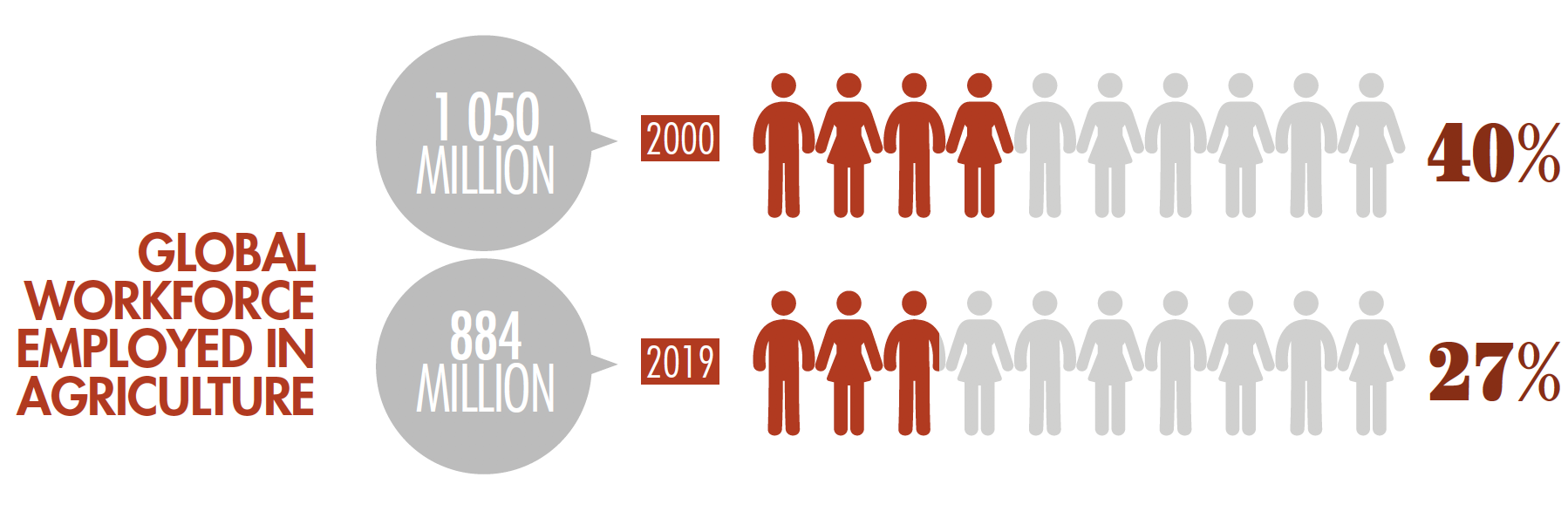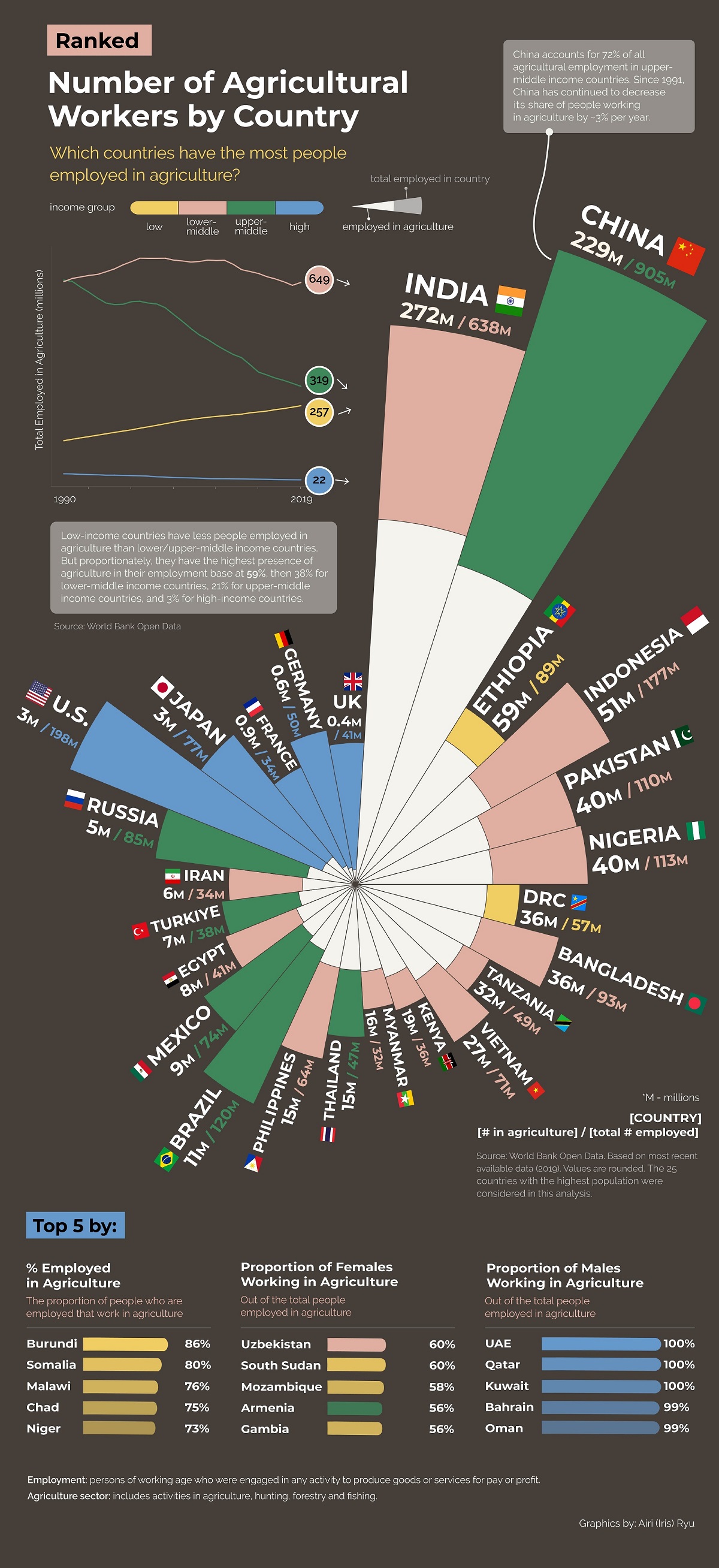Number of Agricultural Workers by Country
Ranked: Number of Agricultural Workers by Country
Agriculture has long been the backbone of human civilization, providing sustenance and livelihood to billions of people across the globe.
As of 2021, an estimated 27% of the global workforce was employed in agriculture, though the sector represents only 4% of global GDP.
The graphic above uses 2019 employment and population data from the World Bank to rank the distribution of agricultural workers in the world’s most populated countries.
Asia and Africa Have the Most Agricultural Workers
Being the most populous countries, India and China lead the ranking with 272 million and 229 million people employed in agriculture, respectively:
In fact, McKinsey estimates that more than 60% of sub-Saharan Africa’s entire population consists of smallholder farmers, with about 23% of sub-Saharan Africa’s GDP coming directly from agriculture.
In contrast, agriculture represents significantly less employment in high-income countries. The U.S. and Japan both have an estimated 3 million agricultural workers, accounting for only 3% and 4% of the total employed population, respectively.
In terms of gender balance, women on average represent 37% of all agricultural workers, with a majority share in just 20 countries within Africa and Asia.
Evolution of Agricultural Jobs Over Time
Over the past century, agricultural workers have declined in number due to technological advances, urban migration, land use changes, and economic diversification.

Source: FAO
However, they still represent a quarter of the global workforce and even with the modernization of agriculture, workers are still necessary to meet a growing demand.
For instance, a study in Bioscience has suggested that agricultural production will need to increase by at least 25% to meet the food demands of the world’s population by 2050.



























